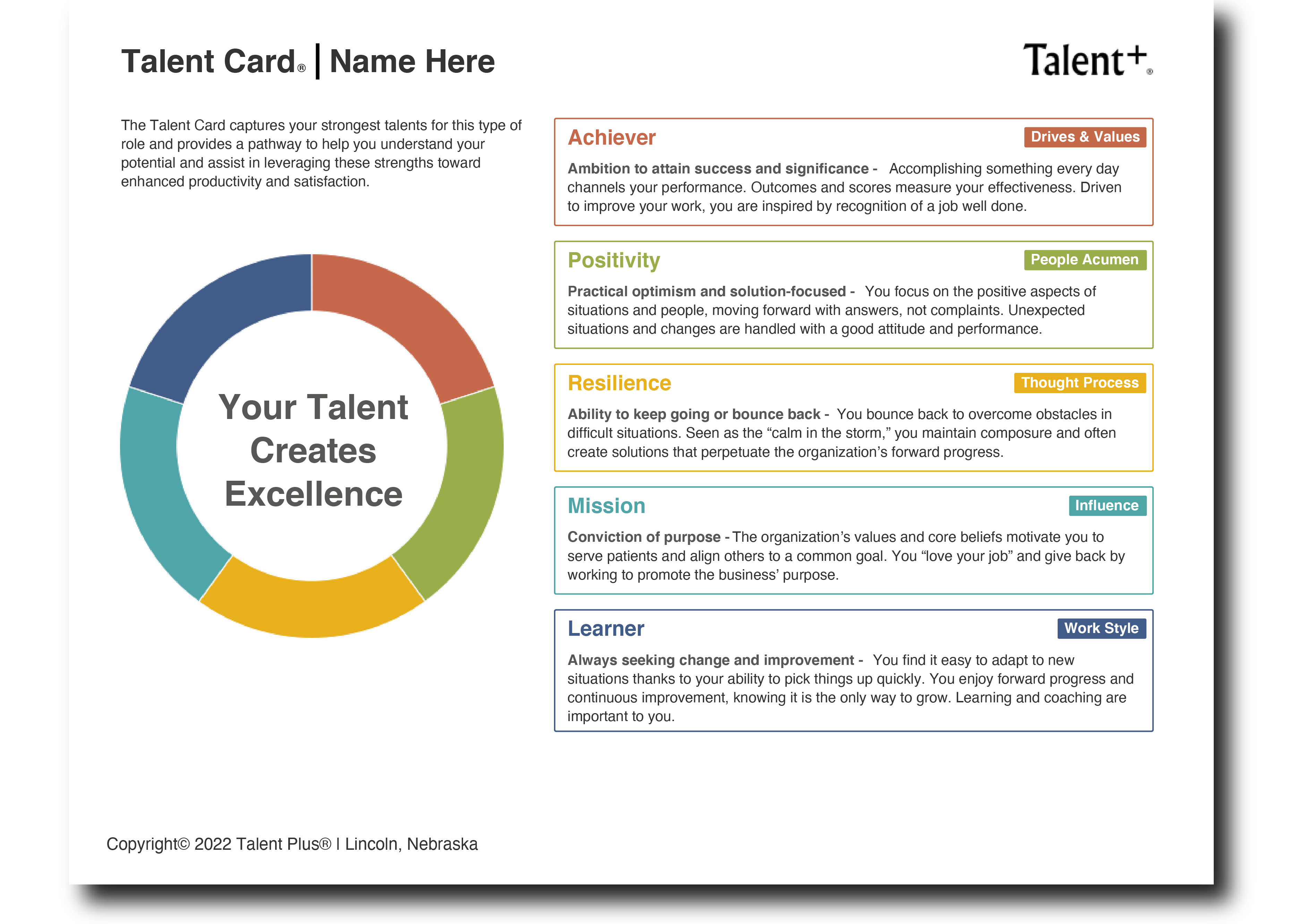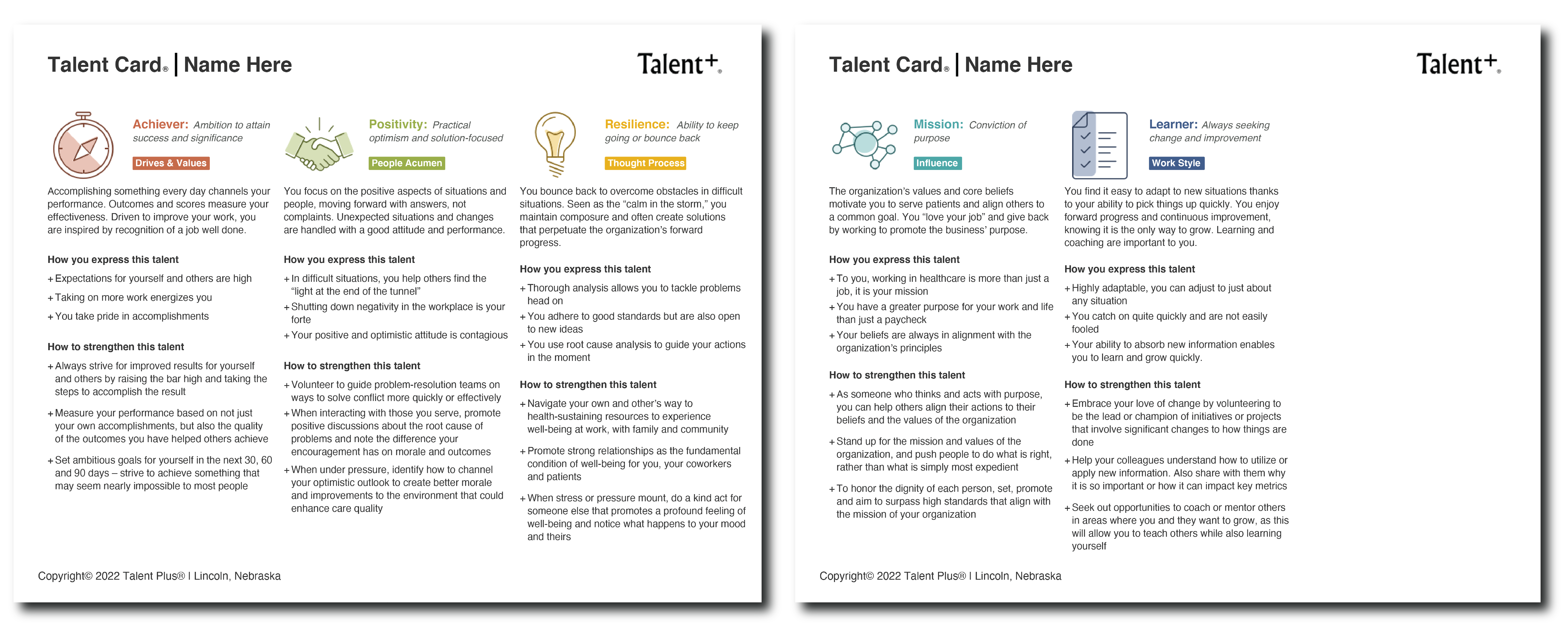
Higher revenues, company growth, aspirational vision — the fastest way to accomplish all of these goals is through your employees.
Employee development is essential for the long-term success of organizations (Jacobs & Washington 2003). Employees who feel they are being developed will produce at a higher rate than those who do not. Furthermore, 87% of Millennials say “professional or career growth and development opportunities are important to them in a job.” Unfortunately, only 29% of organizations have a clear learning development plan for their employees.
Why Do Leaders Struggle To Develop Their Employees?
Leaders must take the time to understand their employees’ individual strengths and weaknesses, and their unique long-term aspirations. So, how do leaders assess these aspects of their employees?
First, leaders should use a talent assessment to understand their employees’ strengths and weaknesses. Second, they should have one-on-one career development discussions with their employees, focused on their unique career aspirations. This article will focus specifically on recognizing talent and setting goals using talent assessments.
Use Talent Assessments To Understand The Whole Employee
Assessments that evaluate employee strengths and weaknesses are essential to understanding the whole employee. Most selection and development tools focus on the skills, knowledge, and experience of employees. While these are important to know and understand, our research shows, they account for only about 50% of the variance in employee productivity.
For a complete picture of the employee, the key for leaders is to use a talent-based assessment. Talent assessments examine the thoughts, feelings, and behaviors of employees. These include traits like:
- Relationship-orientation
- Focus
- Learning agility
- Persuasion
When a leader understands these talents — the foundational, unique strengths of the employee — a leader can use them to maximize their success and contribution to the organization.
Celebrate Your Employees’ Talents
Leaders can focus on development with yearly goal-setting sessions with each of their direct reports. The goals should represent each person’s aspirations and ought to be based on two main aspects:
- The employee’s talents
- Their knowledge and skills
Leaders should use assessments to understand and maximize the unique strengths of an employee, then coach the employee using feedback from those assessments. Talent Plus offers talent assessments for various industries and every level of employee.
For example, Talent Plus offers the Non-Clinical Healthcare Professional Talent Online® Assessments (TOA). Employees in healthcare who are not patient-facing would complete this TOA.
The Talent Card Shows An Employee’s Top 5 Talent Themes
Each of the TOA’s questions is associated with one of 10 talent themes. Once the TOA is completed, the leader and the employee can both access a report that celebrates the employee’s top five talent themes. This report is the Talent Card®.
From a strengths-based approach, the Talent Card focuses on the employee’s greatest strengths and on how to grow each one. Now, it is key that the leader (and employee) focus on developing those strengths.
A Example Of A Talent Card
As you can see, the Talent Card below presents the employee’s top five talent themes Achiever, Positivity, Resilience, Mission and Learner.
All ten themes contribute to employees’ overall talent. But our research shows, the top five themes contribute about 75-80% of their overall strengths. Therefore, by focusing on these top five strengths, the leader and employee will see a greater return on their investment.

Create Goals Using Each Of The Top 5 Strengths Using TalentBank®
Creating goals for each strength is the most important part. The Talent Card guides the way for the leader to create these goals.
The Talent Card is automatically generated inside of TalentBank® for individuals who complete a TOA. TalentBank, our proprietary software, is built to provide managers and employees with the visibility and resources they need to recognize, engage, accelerate and lead natural talent.
Within TalentBank, you can click on one of the themes to expand an employee’s Talent Card. This reveals two sections:
- How this talent may be exhibited in their work
- How to grow this talent
Each section contains three points. Using the “grow this talent” section, the leader might ask the employee, “Which one of the three points most resonates to you as an area of opportunity?” That is, which one of the statements does the employee want to focus on to grow, and why?

After the employee selects the statement they want to focus on, leaders should encourage them to follow these three steps:
- Form a goal around that statement. Formulate a relevant, timely (within a year) and attainable goal.
- Create a measurable outcome. This is key. For the goal to be successful, there must be a measurement. “Trying harder” is not enough.
- Two to four process steps to reach the goal. That is, what are the key steps to create a successful goal?
Don’t Forget To Review Employee Goals
It is important for leaders to ask their employees to submit their goals for review. In many cases, unfortunately, employees and leaders utilize goal-setting activities only for remedial reasons (like improving a certain skill) and fail to create a specific goal with a measurable outcome.
Instead, leaders should have quarterly follow-up meetings with their employees to monitor the success of their goals. This helps to accelerate the employees’ natural talents and develop them into leaders.
Use The Talent Card To Understand Employee Strengths
With this process — having employees identify their strengths through a TOA, and developing their strengths through the Talent Card — employees have an opportunity to grow their strengths and enjoy a more rewarding career.
Your organization will benefit by retaining talented, enthusiastic employees who grow into leaders. And as always, Talent Plus is here to help you accomplish this!

Jacobs, R., & Washington, C. (2003). Employee development and organizational performance: a review of literature and directions for future research. Human Resource Development International, 6(3), 343-354.
Scott C. Whiteford, Ph.D.
Scott C. Whiteford, Ph.D. is the Director of Leadership Analytics at Talent Plus where his role is to partner with, listen to and find solutions for our clients, their teams and organization. With an emphasis on strengths, through selection and development, he helps our clients find success on their Talent-Based Journey.
“I focus on the strength management approach to help grow leaders and improve team and organization cultures.” – Scott Whiteford
Talents: Relationship, Ego Drive, Focus, Conceptualization and Intelligence
Latest Posts: Blog

Blog July 24, 2024
Go for the Teamwork Gold
Discover the keys to building engaged workplace teams. Learn how coaching strategies can unlock your work team's full potential.
Read More
Blog June 20, 2024
Integrating Talent Plus Assessments with Your Applicant Tracking System (ATS)
Learn how integrating Talent Plus assessments into your ATS can streamline your talent acquisition process and improve candidate volume.
Read More
Blog June 03, 2024
How Workplaces Can Support Working Parents During Summer Break
Summer breaks rarely match up with work schedules, affecting working parents. Leaders must adapt & accommodate or risk losing good employees.
Read More
Blog May 14, 2024
The Intersection Between Planning and Engagement
Learn how succession planning and employee engagement are interconnected and how they can drive organizational success.
Read More
Blog May 09, 2024
Well-Being, Burnout and How To Invest in Your Employees
Boost employee engagement and well-being with these four strategies. Learn the keys to fostering a dynamic and flourishing workplace culture.
Read More
Blog May 03, 2024
Unlock Your Potential With the Talent Card
Unlock your potential with the Talent Card. Discover the benefits of understanding your talents and learn examples of how to leverage them.
Read More

